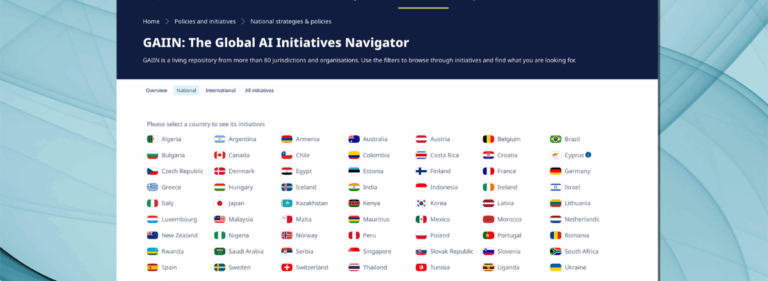Harnessing Artificial Intelligence for Development

AI to reshape development
Imagine you are a farmer in Mozambique desperately trying to identify the cause of leaf damage across your vast fields and those of neighbouring farms in order to detect the presence of pests that could threaten your country’s food security. Or, you are a first-time borrower in Kenya trying to prove your credit worthiness to lenders so that you can receive the small loan needed to start-up your innovative new business idea. Or instead, you are an emergency response unit in Nepal trying to assess the damage from a recent earthquake and quickly predict reconstruction needs. The good news is – there is an application for that!
And these digital applications are only made possible by harnessing the power of artificial intelligence (AI).
In fact, current technological advancement around AI is being driven by improved digital connectivity, rapidly increasing amounts of data, advanced algorithms, and leaps in processing power. And while most of its development and applications are currently in developed economies, AI also has incredible potential to significantly reshape the global landscape of the developing world too. However, while AI offers significant potential to solve complex development challenges and expand access to services, the technology comes with a number of risks which if left unattended to can threaten to inflate an already widening ‘AI divide’ between and within developing countries, increasing social inequality and leaving millions, if not billions, behind.
Like with other pillars of digital transformation, governments can play a key role in balancing the opportunities and risks associated with AI by designing the enabling policies and regulatory frameworks to facilitate its development and adoption. The “Harnessing AI for Development” initiative, prepared with support of the Digital Development Partnership, is an on-going work within the World Bank’s Digital Development Global Practice that aims to understand the role of governments in fostering AI development and adoption in developing country contexts. The work highlights how governments are designing policy and regulatory frameworks around AI to support their unique development needs and make progress towards tackling each of the 17 UN Sustainable Development Goals (SDGs).
Beginning with an overview of potential benefits and applications, the work started by studying specific examples of how AI can be leveraged across different types of development challenges, ranging from healthcare to transportation to education and more.
An analysis of some emerging practices of AI policymaking around the world illustrated the wide range of policy tools and approaches that developing country governments can leverage to harness AI technologies, with an eye towards mitigating risks. Nineteen case studies and practices – representing both developed and developing countries – reflected various levels of economic, human, and digital development, as well as an opportunity for leapfrogging. Nascent countries such as Egypt, Ghana, and Kazakhstan have an embryonic strategy in place but may not be dedicating resources towards implementation, while early adopters — countries such as Finland (which was among the first European countries to launch an AI strategy in 2017) or the UAE (the first country to appoint a Minister of State for AI) — are pursuing AI innovation as a national priority. This report includes an extensive comparative analysis of the latter two countries.
Re-imagine the role of Governments
While policies and strategies for harnessing AI remain in their infancy, there are emerging practices that can inform developing countries on their own AI strategies. One key practice is for governments to proactively set the course for AI development and adoption. In this role, the government can take several approaches ranging from a proactive ‘directing’ role, to a facilitating ‘enabling’ role, employing various tools across multiple policy domains.
Governments can lead the development of new policy and regulatory pathways. They can develop a roadmap with clear goals (which can take the form of a national AI strategy) to catch up or leapfrog their development. They can also build AI capabilities that establish robust digital economy foundations. An emphasis remains on continuing to build capacity within governments themselves. It is important to also convene and align stakeholders, particularly the private sector. In addition, governments can spark demand and create market conditions for AI development. Finally, governments are accountable for ensuring the ethical, safe and responsible development and adoption of AI.
However, it remains to be seen how adequately a government can fulfil such fundamental role in setting a direction for a country’s AI trajectory when capacity and competence are relatively low. Case studies from early adopters show that much of AI technological development and adoption is currently market driven. Governments in developing countries could gain from engaging the private sector, along with other key stakeholders including international and regional bodies, civil society, and universities and academic institutions in the development of country-specific roadmaps for AI adoption.
There is no single policy path for governments in order to advance AI adoption. Our on-going work provides various policy options for developing countries based on the state of their digital adoption and maturity of their digital ecosystem, whether it be emerging, transitioning, or transforming. At this stage of the initiative, our next focus is on developing a diagnostic tool that will help countries in better understanding their potential for advancing their digital development and AI maturity. This diagnostic tool, along with the list of policy options for each classification provides a comprehensive overview of how public policy and regulatory reform can have a significant impact on the development and adoption of AI-driven technology.

































